Driving In Japan – All You Should Know
Desire a trip from behind the wheel but still have a bunch of questions about driving in Japan? You have definitely come to the right page!
Nowadays, Japan’s public transportation systems are among the best in the world. You can easily travel around Japanese cities by subway or train, especially in large metropolitan centers like Tokyo, Osaka and Nagoya. But when it comes to the Japanese countryside, some hiking areas or hidden places where public transportation tends to be inconvenient and infrequent, driving car would be a perfect choice. Follow along as highlights that you really need to keep in mind before you hit the road!
Comprehensive knowledge about driving in Japan
Basic traffic rules
Driving in Japan can be quite complicated and different. Some questions that commonly being asked by foreigners are “Does Japan drive on the left”, “How old do you have to be to drive in Japan”, “What side of the road do they drive on in Japan”.
Well, in Japan you drive on the left and your steering wheel is on the right. Japan speed limit on normal roads is usually 60km/hr and falls between 80-100 km/hr on highways. Road signs and rules follow international standards, and most signs are pictograms or Japanese words.
Besides, turns at red lights are forbidden unless specifically authorized. Vehicles have to come to a full stop before crossing any railway tracks. Driving under the influence of any drugs or alcohol is strictly prohibited. Motorcycles are allowed to pass you on your left so mind this when changing lanes.
Most roads in Japan are toll free apart from expressways, some scenic driving routes and a small number of tunnels. City traffic could be seriously congested. Roads in Japan are quite narrow even in big cities. There is virtually no roadside parking. In mountainous areas, expect that roads are often closed during the winter.
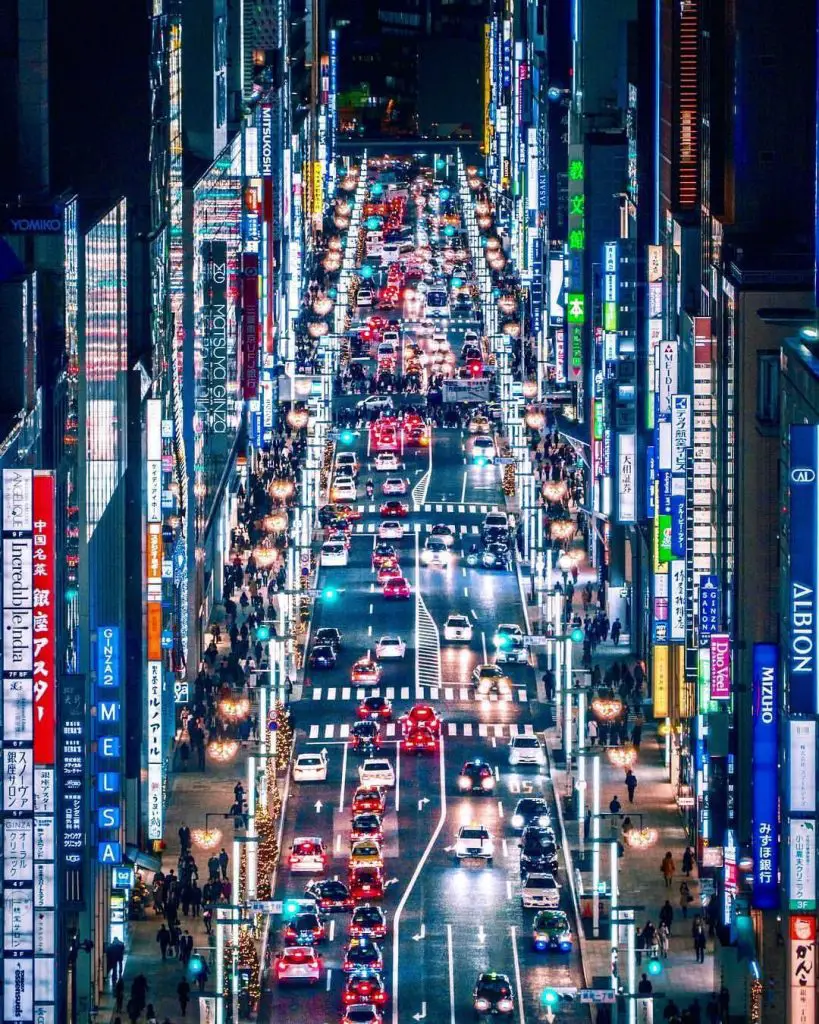
Traffic congestion is a frequent problem in and around urban centers
It is mandatory for all automobile owners and drivers to hold Japanese compulsory insurance. Furthermore, to be legal to drive in Japan you must satisfy two conditions:
Must be at least 18 years of age
Must have a valid Driver’s License or Translation
You will learn more about the License in the next part.
SEE MORE:
How to drive in Japan
Firstly, before you can get out on the road you will either need to have a Japanese Driver’s License, or an International Drivers Permit (IDP). It varies depending on which country you come from and how long you plan to stay in Japan.
Case 1: Short-term Stay / Acquiring International Driving Permit
International Driving Permit (IDP)
For travelers who temporarily visit Japan and their countries have the agreement 1949 Geneva Convention with Japan, you need to bring an International Driving Permit (IDP).
List countries requiring an International Driving Permit:
| Asia | Australia, Bangladesh, Cambodia, Fiji, Hong Kong(China), India, Japan, Kyrgyzstan, Laos, Malaysia, New Zealand, Pakistan, Papua New Guinea, Philippines, Singapore, South Korea, Sri Lanka, Taiwan, Thailand |
| Europe | Albania, Andorra, Austria, Belgium, Bosnia and Herzegovina, Bulgaria, Cyprus, Czech Republic, Denmark, Finland, France, Georgia, Greece, Hungary, Iceland, Ireland, Italy, Luxembourg, Malta, Monaco, Montenegro, Netherlands, Norway, Poland, Portugal, Republic of San Marino, Romania, Russia, Slovakia, Serbia, Spain, Sweden, Switzerland, Turkey, United Kingdom, Vatican City (Holy See) |
| North America | Canada, United States of America |
| South America | Argentina, Barbados, Chile, Cuba, Ecuador, Guatemala, Haiti, Jamaica, Paraguay, Peru, Republic of Dominica, Trinidad and Tobago, Venezuela |
| Africa/Middle East | Algeria, Benin, Botswana, Burkina Faso, Central African Republic, Côte d’Ivoire, Democratic Republic of the Congo, Egypt, Ghana, Israel, Jordan, Kingdom of Lesotho, Lebanon, Madagascar, Malawi, Mali, Morocco, Namibia, Niger, Nigeria, Republic of Congo, Republic of South Africa, Rwanda, Senegal, Sierra Leone, Syria, Togo, Tunisia, Uganda, United Arab Emirates, Zimbabwe |
IDP is valid for a maximum time of one year. After that, it is illegal to drive in Japan unless you return to your home country for at least three consecutive months in between. IDP are not issued in Japan and should be obtained in your home country in advance.
Japanese translation of license
Besides, there’s a number of countries that do not issue permits in the 1949 Geneva Convention but instead have a separate agreement that allows drivers to drive in Japan for up to one year with an official Japanese translation of their driver’s license.
Here is the list of countries requiring Driver’s License from country of domicile + Legal Translation: Taiwan, Switzerland, Germany, France, Belgium, Estonia, Monaco.
You can obtain a translation from the Japan Automobile Federation (JAF) or some of the respective countries’ embassies or consulates in Japan. Note that it will take about a week to receive the translation after submitting your original license.
Otherwise, people from other countries whose international driving permits are not recognized by Japan and people who stay in Japan for more than one year, must obtain a Japanese driver’s license.
Case 2: Long-term Stay / Acquiring a Japanese License
License Exchange
Getting your Japanese Driver’s License can be a little more complex and difficult. First of all, again if you happen to be from one of these special countries or regions, you will be exempted from taking the written and practical exams and able to directly exchange your license:
Austria, Belgium, Czech Republic, Denmark, Finland, France, Germany, Greece, Iceland, Ireland, Italy, Luxembourg, Monaco, Norway, Portugal, Slovenia, Spain, Sweden, Switzerland, The Netherlands, The United Kingdom, Australia, New Zealand, Canada, Taiwan, South Korea, or USA (only Maryland [from Jan 2016] and Washington State [from Jan 2017])
The needed documents:
- Your original non-expired driver’s license
- A passport or other proof that you have resided in the country that your driver’s license was issued in for over three months
- A translation of your driver’s license into Japanese
- A 2.3cm X 3cm W X H photo of yourself
- Your residency certificate (Juminhyo)
The process:
- First, gather all of the required materials mentioned above
- Next, visit the nearest licensing center that has jurisdiction over your area of residence. Don’t need to book an appointment in advance because you’ll have to line up.
Note: The number of foreign license exchanges per day is limited so make sure you get to the center early enough (at least one hour before opening time). And don’t worry, there’s going to have a long line of people waiting with you.
- Once you reach the counter, hand over all of the documents and the staff will take care of all of the paperwork. The process is not too complicated, you just need to sign a couple of forms and have another picture taken (the one that they will actually put onto your license).
- Your license will be printed out the same day. The fees come in the region of 10000 yen.
Japanese Driving exam
Then if your country is not on the list above, you will have to take the actual Japanese Driving exam.
The needed documents:
- Your original non-expired driver’s license
- A passport or other proof that you have resided in the country that your driver’s license was issued in for over three months
- A translation of your driver’s license into Japanese
- A 2.3cm X 3cm W X H photo of yourself
- Your residency certificate (Juminhyo)
The process:
- First, you have all the listed documents well-prepared
- Then contact your local licensing center that has jurisdiction over your area of residence to arrange your first appointment.
- Present at the licensing center as scheduled. Your first meet will mainly be a paperwork check. They’re going to verify the accuracy and validity of your documents.
- Last, you book the second appointment which is the practical examination.
This process typically takes several attempts, even for experienced drivers. Be aware that your driving examiner is unlikely to speak English so if you can’t speak Japanese, you’ll need to hire a translator.
Do not feel bad if you fail, most people take it at least two or three times before passing. It is highly recommended that you do a practice session before taking the exam.
- If you pass the test, then congratulations! You’ll get your driver’s license printed on the same day.
Driving in Japan with US License
Many people also ask this question, can Americans drive in Japan with only a U.S. drivers license? The answer would be “No”.
For short-term visitors, you must also have an International Driving Permits (IDP) issued in the United States by the American Automobile Association or the American Automobile Touring Alliance in addition to a valid U.S. state license to drive in Japan. IDP should cost only US$20, though they are sold online for as much as US$300.
For long-term visitors, you’re required to get your own Japanese license.
Specific notes when driving
So you’re almost ready to make the trip. Here are some specific notes to help you acclimate yourself to the new experience of driving in Japan.
Common Traffic Signs
Below are most of the common signs you may ever see on your road tripping.
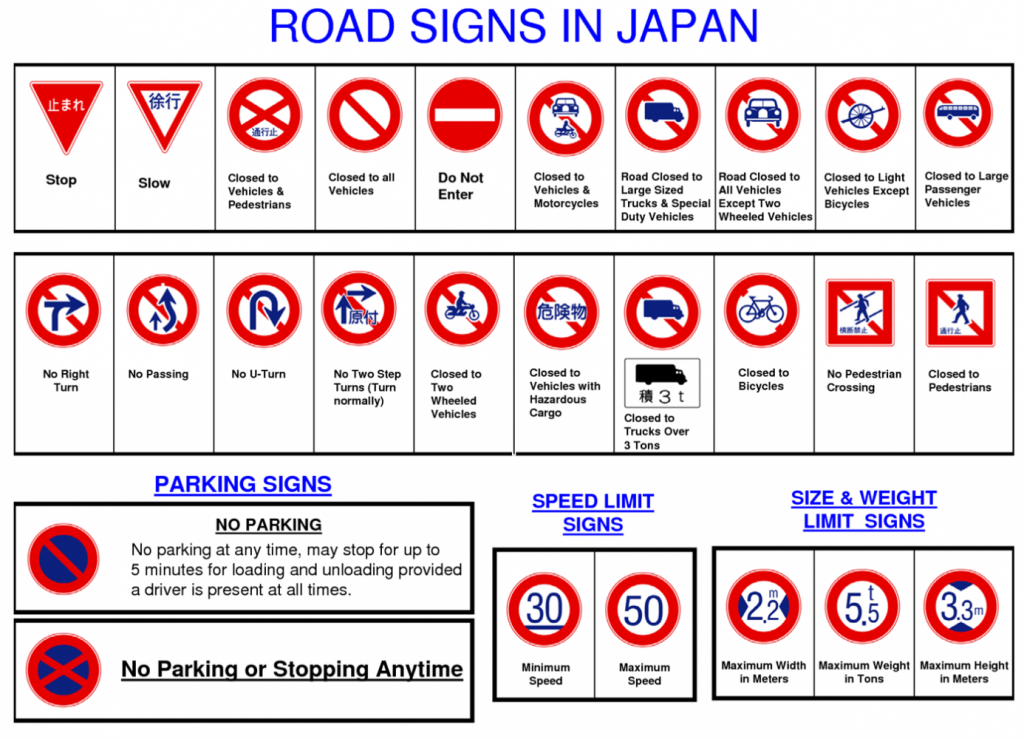
Some Japanese road signs might be different from the ones in your home country
In addition, also note that stop signs could also be seen as these characters 止まれ written directly on the street instead of the normal one.

Japanese stop signs written with the word “tomare,” mean stop, in white
Highway and ETC card
While most roads and expressways in Japan are toll free (Tokyo’s ones being an exception), highways are not necessarily so. Normally, when entering the highway you’ll collect a ticket from a usually unmanned station and then you present it at the exit gate to pay your fare.

Highway entrance signs are in green and rectangle
If you own an ETC (Electronic Toll Collection) card, you will instead be able to use separate gates for access and exit to the highway, without needing to stop. The ETC card needs to be linked to a credit card that will be charged with the highway fares. Please note that regular gates are in green (presenting the kanji for “cash”) and the ETC ones are marked with a purple sign reading “ETC”.
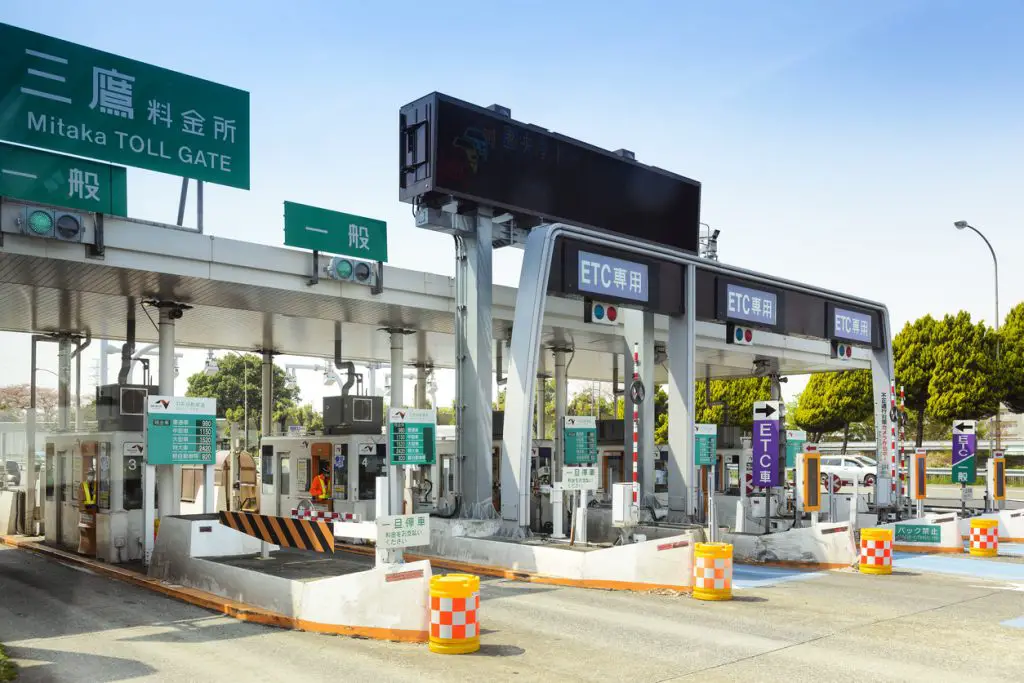
Gate arm usually does not rise until the very last second, so just move slowly and go through as normal
Refueling
Japan’s gas stations which can be easily found on every road include both self-service facilities and full-service options. Most gas stations close during the night. Normally, it will cost you ¥140/1l of regular gasoline (as of July 2019). High octane gas and diesel are also widely available. Both credit cards and cash are accepted as forms of payment.
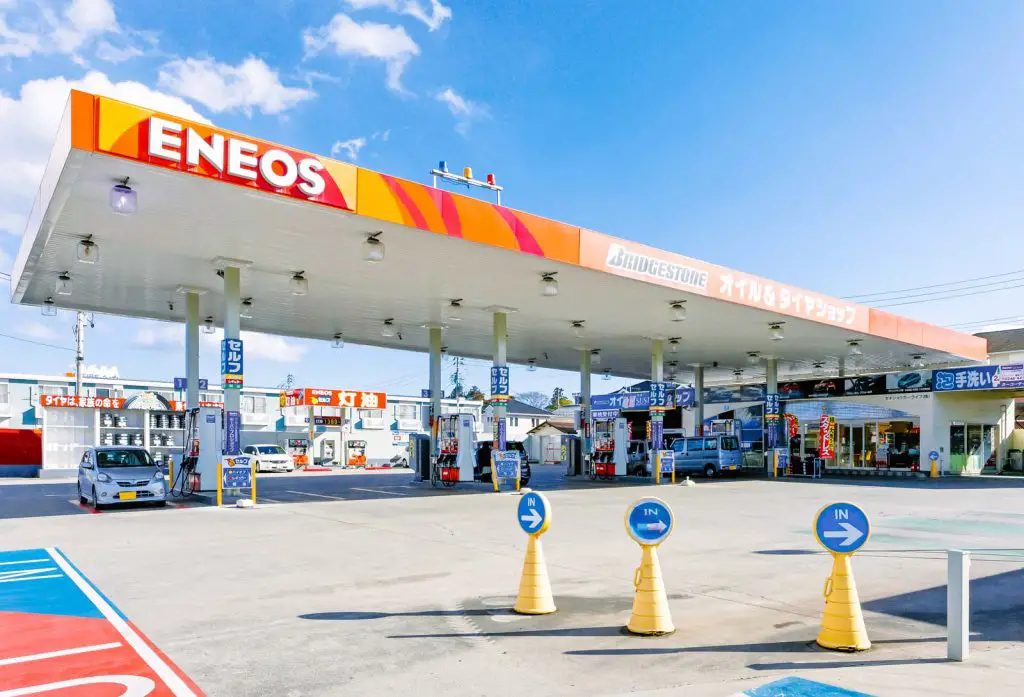
Petrol stations traditionally provide full service
Furthermore, if you’re not customers with member cards, the price will be slightly higher than the one that you see on the lightboards at gas stations.
Parking
Parking in the center of large cities is very expensive, costing several hundreds of yen per hour. It is typically ¥200 – ¥500 per use for a slot in national parks and ¥1000/ night in urban hotels while in rural areas, they usually offer free parking.
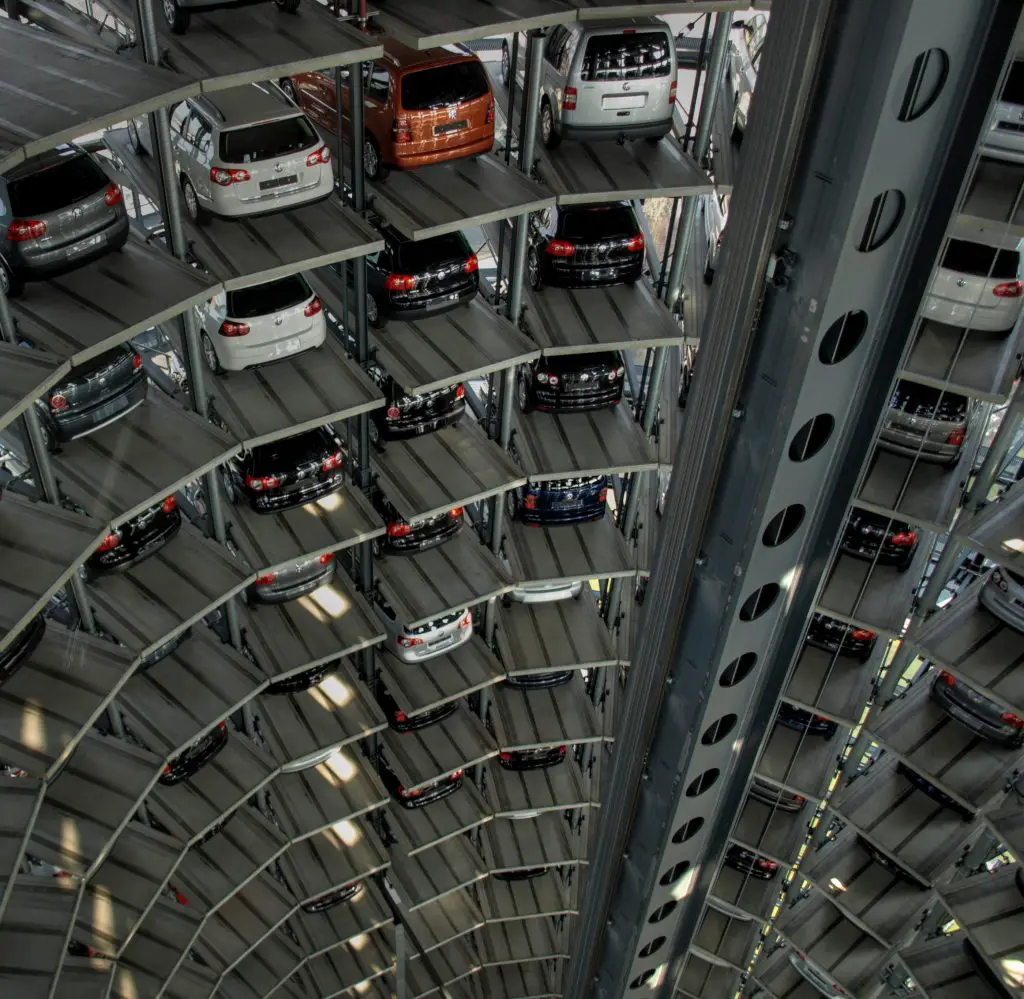
Elevator parking is a unique type of parking lot in Japan in which cars are stored in towers
Driving Tips
Driving in Japan can be a terrifying experience, so here are some useful tips for you to survive on the street:
- Japanese roads could be crazily complicated sometimes so you will need the navigation systems in your car which provides you useful visuals to travel easier.
- Japan is full of foot traffic and cyclists, so be extra careful when driving in small neighborhoods.
- A small car is the best option when moving in very narrow streets in Japan.
- Blinking hazards 2 or 3 times simply means “Thank you.”
- If you see hazards on a highway in the distance it could mean that the traffic is coming to a sudden stop. If you see this, slow down and turn on your hazards for the person behind you.
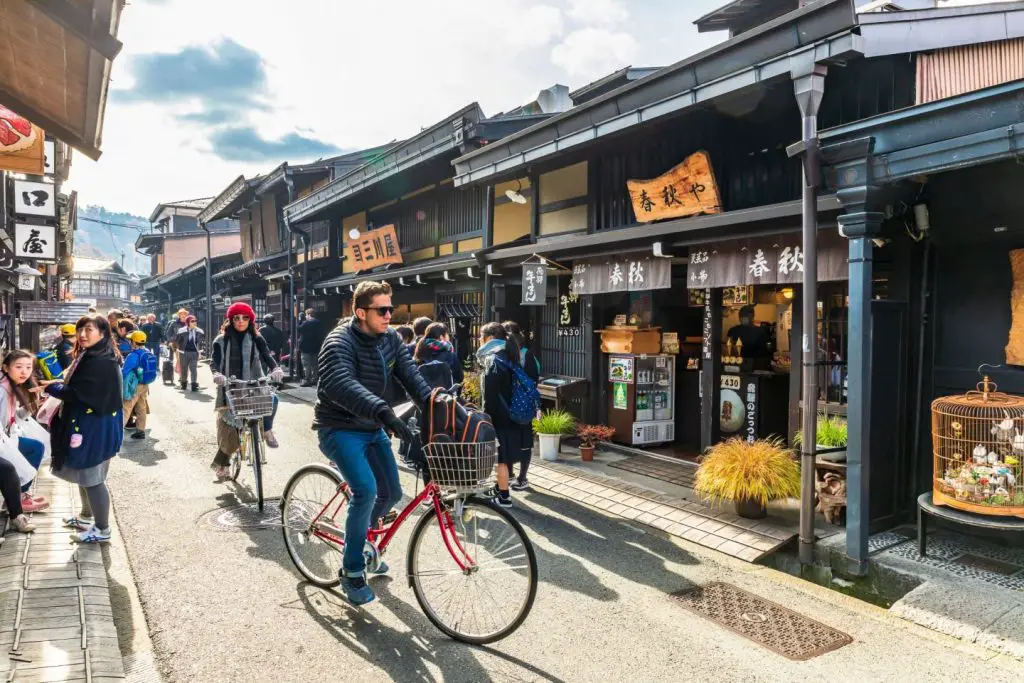
Many of the streets you find in Japanese towns, even in Tokyo, are so old and narrow
In case of emergency
Within Japan, please dial 110 for police, and 119 for ambulance.
For roadside assistance, please contact the Japan Automobile Federation (JAF) at 03-5730-0111 in Tokyo, 072-645-0111 in Osaka, 011-857-8139 in Sapporo, 092-841-5000 in Fukuoka, or 098-877-9163 in Okinawa.
Also note that you can get to frequent “emergency stations” on highways and expressways for help.
Conclusion
So that’s pretty much about driving in Japan. Traveling by car could be an amazing experience only when you’ve fully prepared for it. For more details about rules, please check the official website of the Japanese Automobile Federation.
Nice trip and have fun!

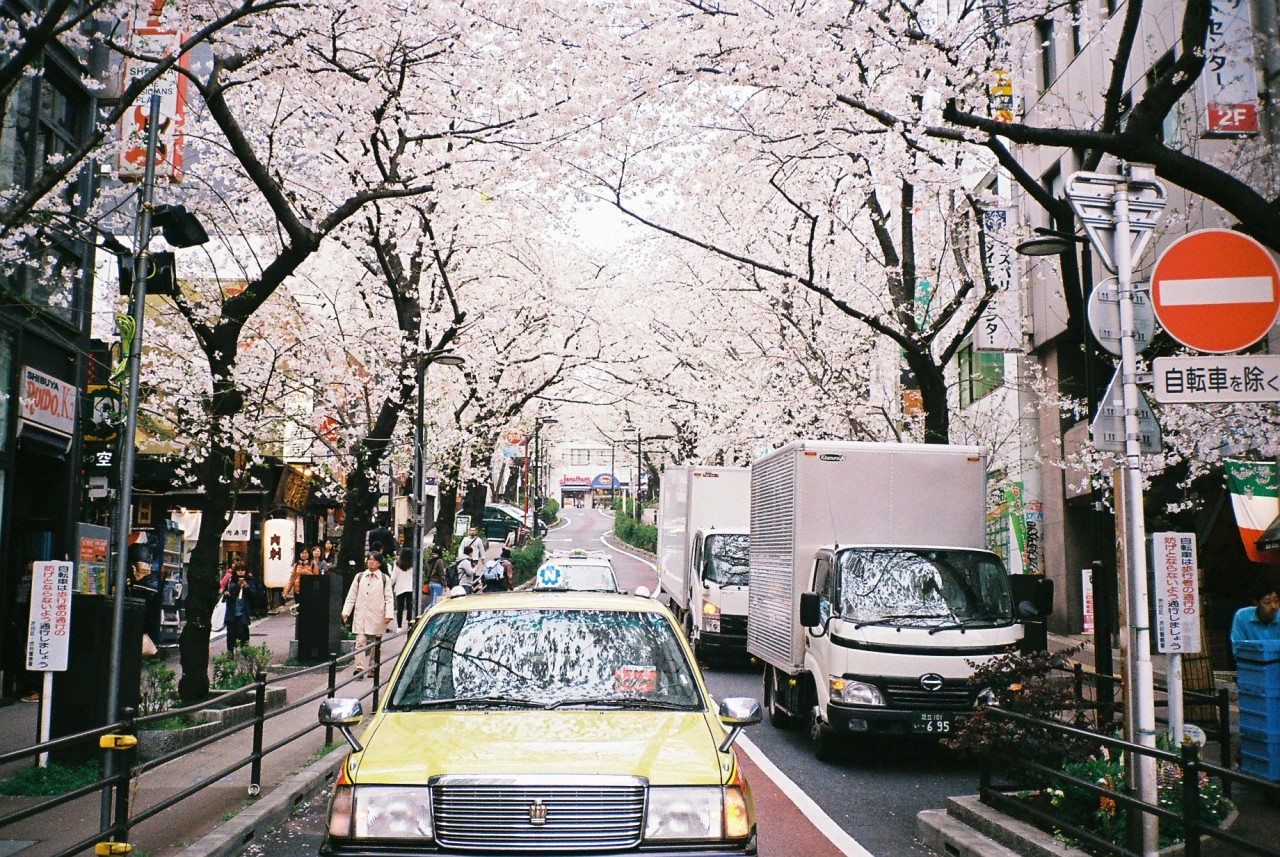
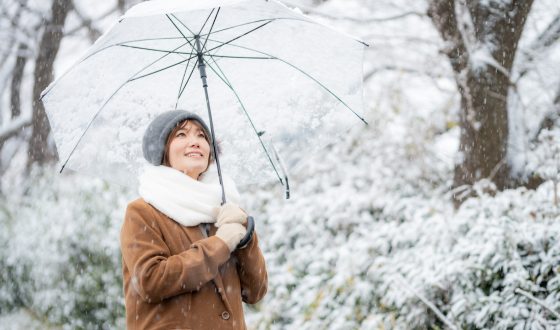
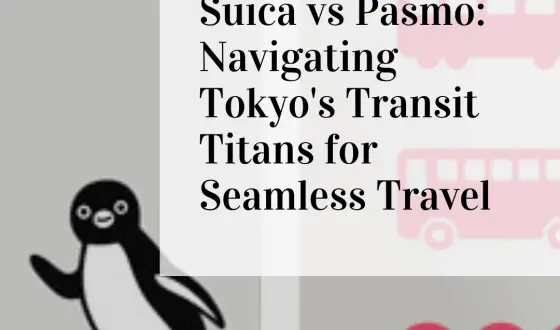






HI, I would like to know if it is relatively safe still to drive along this route between 9th Dec 2022 till 16th December 2022. Nagoya to Masumoto, then to Ikaho Onsen in Gunma, Nikko, and back to Tokyo. Any road closure during this period? I originally intended from Matsumoto to Kusatsu but I think part of road closure during Winter. Appreciate advice from you. Thanks.
Basically it depends on the snow situation at that time.
There will be specific information at that time.
And here is what Ikaho onsen hotel says …
Ikaho Onsen usually has snow from November to April.
In winter, please use winter tires, tire chains, etc.
Please drive safely.
We are delivering current road information with a live camera on the Gunma Prefecture HP.
Please refer to the image list Shibukawa Civil Engineering Office [Ikaho Murakami Line Ikaho] (image near New Ikaho).
Please note that road conditions may change suddenly due to changes in the weather. Please use this image only as a reference, and be careful when driving before coming to Ikaho Onsen.
Ikaho onsen
→
Live camera
https://www.kendobousai-gunma.jp/photo/area3.html